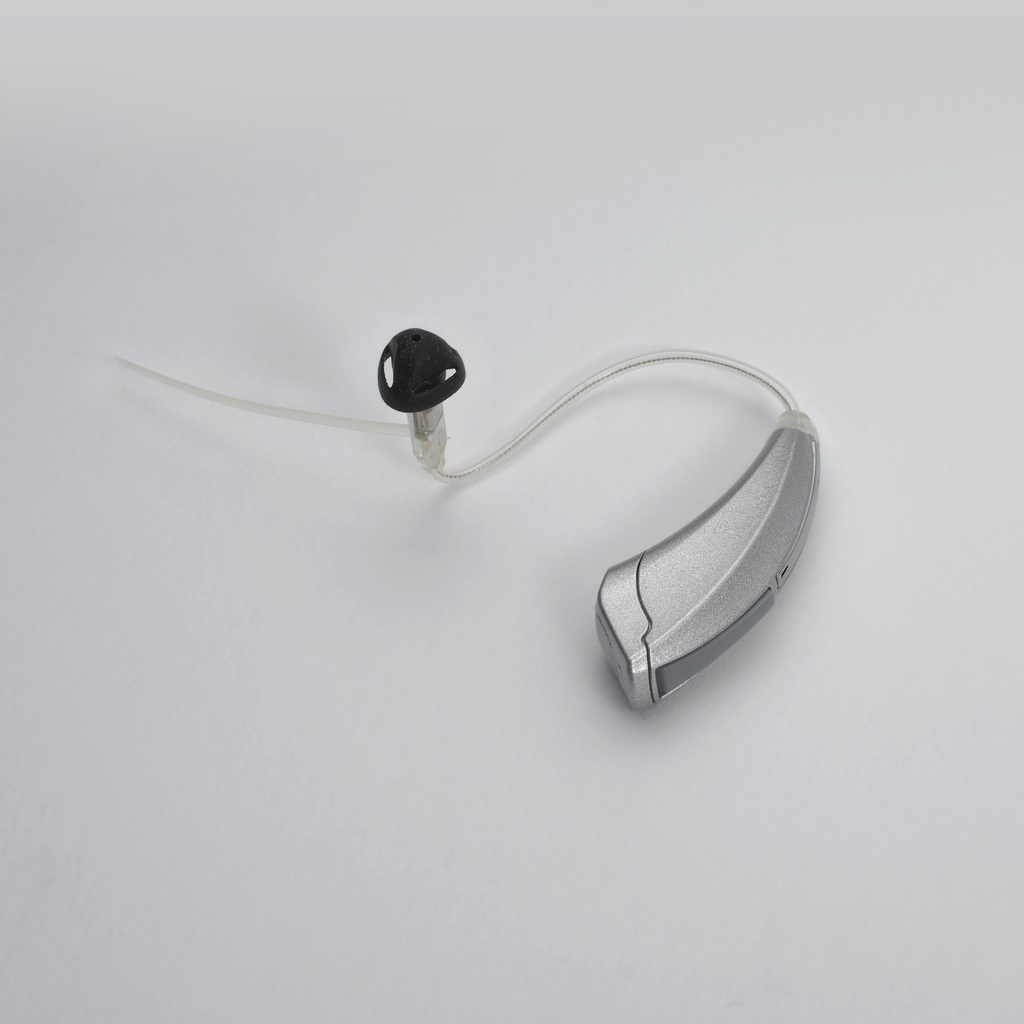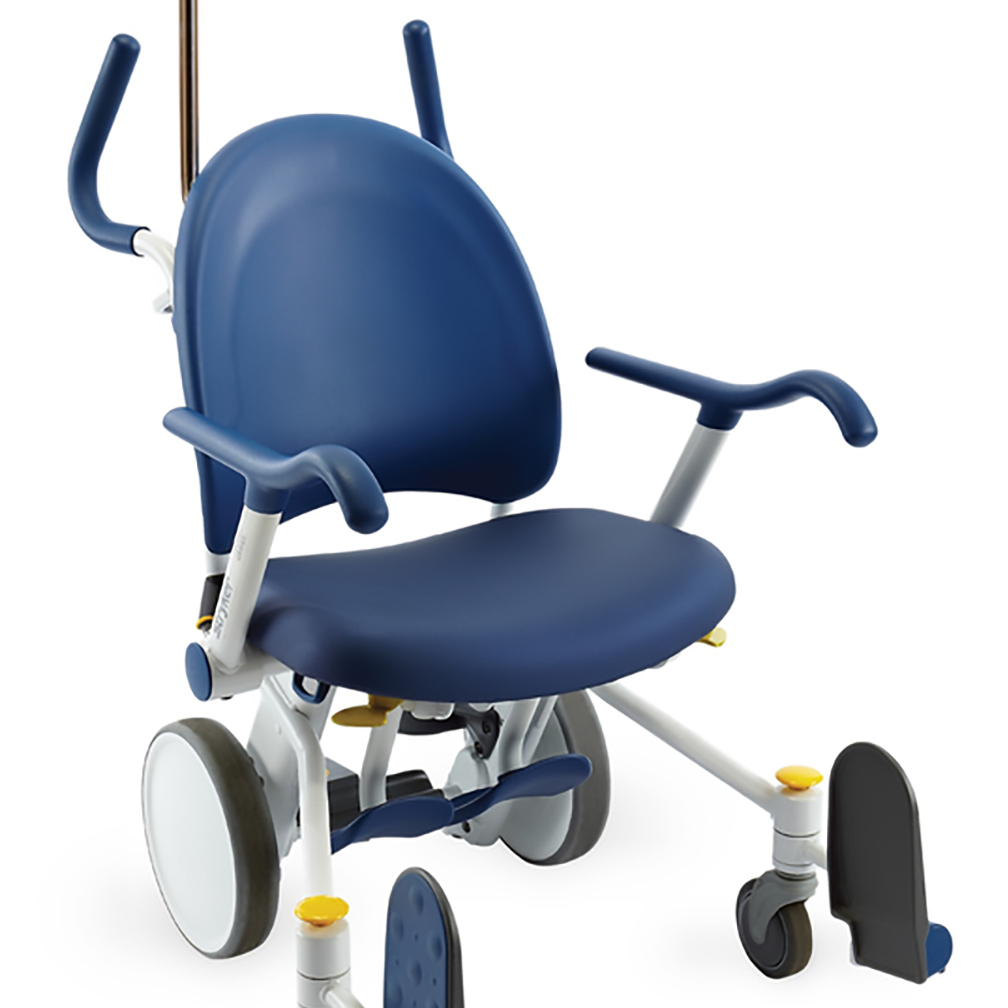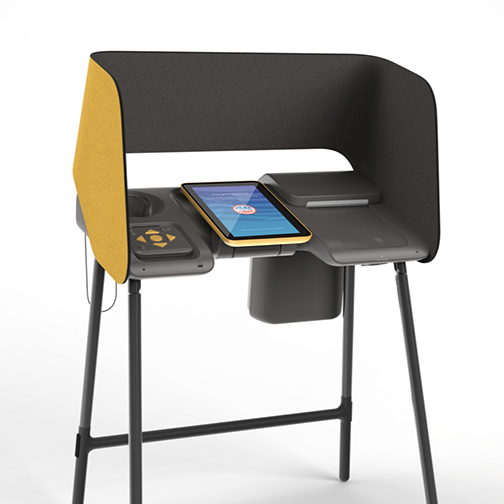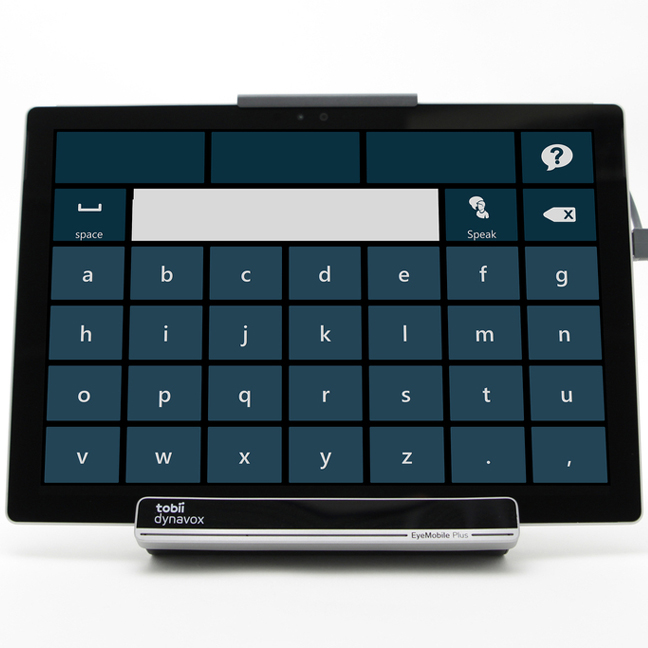EXHIBITION HIGHLIGHTS
Discover some of the most groundbreaking designs from the Access+Ability exhibition. These featured works showcase how creativity, collaboration, and innovation are expanding possibilities for people of all abilities.
Zon Hearing Aid
Individuals with hearing impairments can wait as long as eight years before getting their first hearing aid, because they associate the conventional shrimp-shaped beige hearing aid with age and weakness, even disability. To address this stigma, Stuart Karten Design created this stylish and empowering tool. Borrowing visual cues from modern architecture, jewelry, and automotive design, Karten transformed the hearing aid into a visually appealing object. Available in a palette of six understated colors that blend with various hair and skin tones, Zon is virtually invisible when worn behind the ear and bears a closer resemblance to a piece of jewelry than to a medical device. The Zon hearing aid was a 2008 recipient of the Cooper Hewitt, Smithsonian Design Museum’s People’s Design Award.
Prime TC Transport Wheelchair
This wheelchair represents a complete rethink of hospital patient transport. Taking an empathetic approach to its redesign, several “users” were considered, among them the patient, the transporter, and maintenance people. Other issues considered included transferring patients and equipment, patient falls, spread of infection, clinician back strain, nesting storage, lost parts, and theft. Its many articulating parts expand the notion of portability.
Maptic Bracelet
Individuals with hearing impairments can wait as long as eight years before getting Maptic is a wearable navigation system for people who are blind. Like jewelry, the collection of devices can be worn like a necklace combined with feedback units clipped onto clothing, or worn around the wrist. Connected to a voice-controlled iPhone app and GPS, haptic vibrations not only guide the wearer, but are able to track obstacles above the knee.
L.A. County Voting Booth Redesign
Designed for Los Angeles County as a modular system that can adapt over time, this voting booth exemplifies inclusive design, ensuring every citizen access to an intuitive and accessible voting experience. It addresses
all voters, including those unfamiliar with technology and who speak languages other than English, voters with vision and hearing loss, in wheelchairs, and with learning disabilities.





